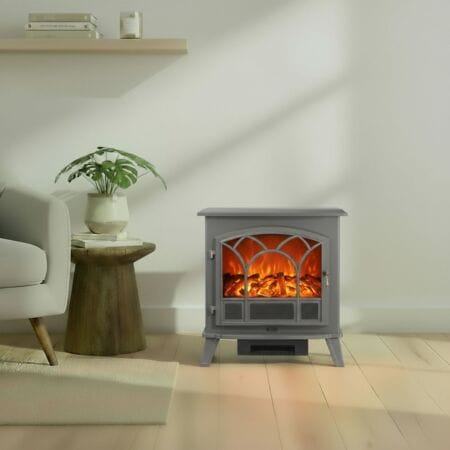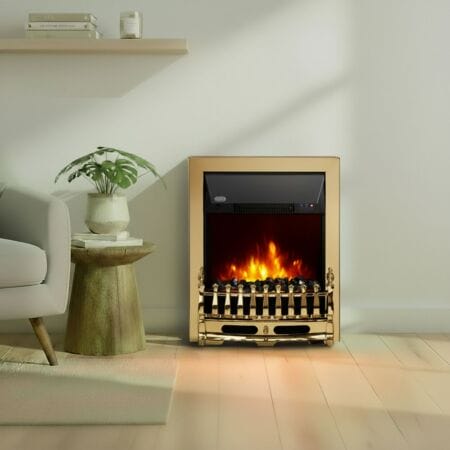Contents
ToggleWhat we'll cover...
A brief overview of smart heating systems and how they can help your home heating work more efficiently.
The future of home heating is here
If you’ve ever left the house only to realise you forgot to turn the heating off, or woken up at 3am in a room colder than your hungry toddler’s stare, then smart heating might just be the game-changer you need. Gone are the days of manually adjusting radiators and thermostats like you’re operating a Victorian-era steam engine. Smart heating brings convenience, energy savings, and maybe even a little bit of futuristic magic to your home.
In this guide, we’ll cover everything you need to know about smart heating systems, from how they work to why they might just be the best investment you’ll make this year. Whether you’re looking to slash your energy bills, create a home that heats itself based on your routine, or simply impress your guests with voice-controlled heating (“Alexa, make it toasty in here”), we’ve got you covered.
What is smart heating? Understanding the basics
Smart heating refers to a heating system that can be controlled remotely via a smartphone, tablet, or voice assistant. It allows you to adjust your home’s temperature settings from anywhere in the world (or just from the comfort of your sofa) and often comes with automation features that help optimise energy use.
The main components of a smart heating system include:
- Smart thermostats – The brain of the operation, smart thermostats allow for remote control and automation.
- Smart radiator valves (TRVs) – Thermostatic radiator valves, or TRVs, provide you with room-by-room control of your heating.
- Zonal heating systems – Different areas of the home to be heated independently with zoned heating.
- Wi-Fi connectivity – Enabling easy communication between devices, such as Amazon Alexa and Google Home
Smart heating isn’t just about convenience; it’s about efficiency as well. Traditional heating systems often heat the whole house unnecessarily, but with smart heating controls, you can fine-tune your heating to match your lifestyle, reducing waste and cutting down those energy bills.
How smart thermostats work and their benefits
A smart thermostat is the central hub of a smart heating system. It connects to your boiler and can be controlled remotely via an app, or even through voice commands using Alexa, Google Assistant, or Siri.
Key benefits of smart thermostats
- Remote control: Adjust the heating from your phone while you’re at work, in bed, or even on holiday.
- Learning capabilities: Some models learn your routine and automatically adjust heating schedules to suit your lifestyle.
- Energy savings: A properly used smart thermostat can reduce heating costs by up to 25%.
- Geofencing: Uses your phone’s location to detect when you leave or return home, adjusting the temperature accordingly.
- Integration with smart homes: Works with other smart home devices for seamless automation.
Smart TRVs - What they are & how they improve efficiency
Smart thermostatic radiator valves (TRVs) allow you to control individual radiators independently, meaning you can set different temperatures for different rooms. No more overheating the guest room that nobody ever uses!
Benefits of smart TRVs
- Zonal heating: Only heat the rooms you’re using.
- Remote adjustments: Control radiators via an app.
- Energy savings: Avoid wasting energy on unused spaces.
- Schedule automation: Set custom heating schedules for each room.
Our radiator valve buying guide offers further insight, and our article, Smart TRVs vs manual TRVs: Which is better for your home?
Zonal heating takes energy efficiency to the next level by dividing your home into different ‘zones’ and allowing you to heat them separately. Why heat the entire house when you’re only using the living room?
Setting up a zonal heating system
- Install smart TRVs on all radiators.
- Connect them to a smart thermostat for seamless control.
- Use scheduling features to assign different temperatures to different zones.
- Integrate with voice assistants for easy adjustments.
WiFi vs Bluetooth smart heating controls: Pros & cons
When choosing a smart heating system, you’ll need to decide whether to go for Wi-Fi-connected devices or Bluetooth-enabled ones. Here’s how they compare:
Feature | Wi-Fi Smart Controls | Bluetooth Smart Controls |
Control Range | Anywhere via the internet | Limited to your home |
Reliability | Dependent on internet connection | Works without Wi-Fi |
Energy Use | May use more power | Lower power consumption |
Ideal For | Large homes, remote control | Small homes, direct control |
Wi-Fi smart heating controls offer more flexibility, while Bluetooth options are great for those who prefer a simple, localised solution.
Upgrade to a smarter, more efficient home with BestHeating
Smart heating is no longer a luxury – it’s a necessity for anyone looking to save money, reduce energy waste, and enjoy ultimate home comfort. Whether you start with a simple smart thermostat or go all-in with zonal heating and TRVs, upgrading to a smart heating system will transform the way you heat your home. Our guide on 5 smart heating trends to watch in 2025 offers further inspiration and insight.
Ready to make the switch? Shop the latest smart heating products now and take control of your home’s warmth like never before! Let us know all about your smart heating upgrades in the comments, or through Instagram, Facebook or X.
John is a Research Specialist for the Best Heating Advice Centre, where for over nine years he has dedicated himself to demystifying home heating for our customers. He specialises in creating clear, data-driven guides and how-to articles by collaborating directly with our team of certified heating experts and product engineers.
His work, built on a foundation of journalistic research, has helped millions of readers make confident and informed decisions about their home heating. When he’s not breaking down the heat output differentials from radiators to heated towel rails, John fancies himself as a fine football and music connoisseur.







